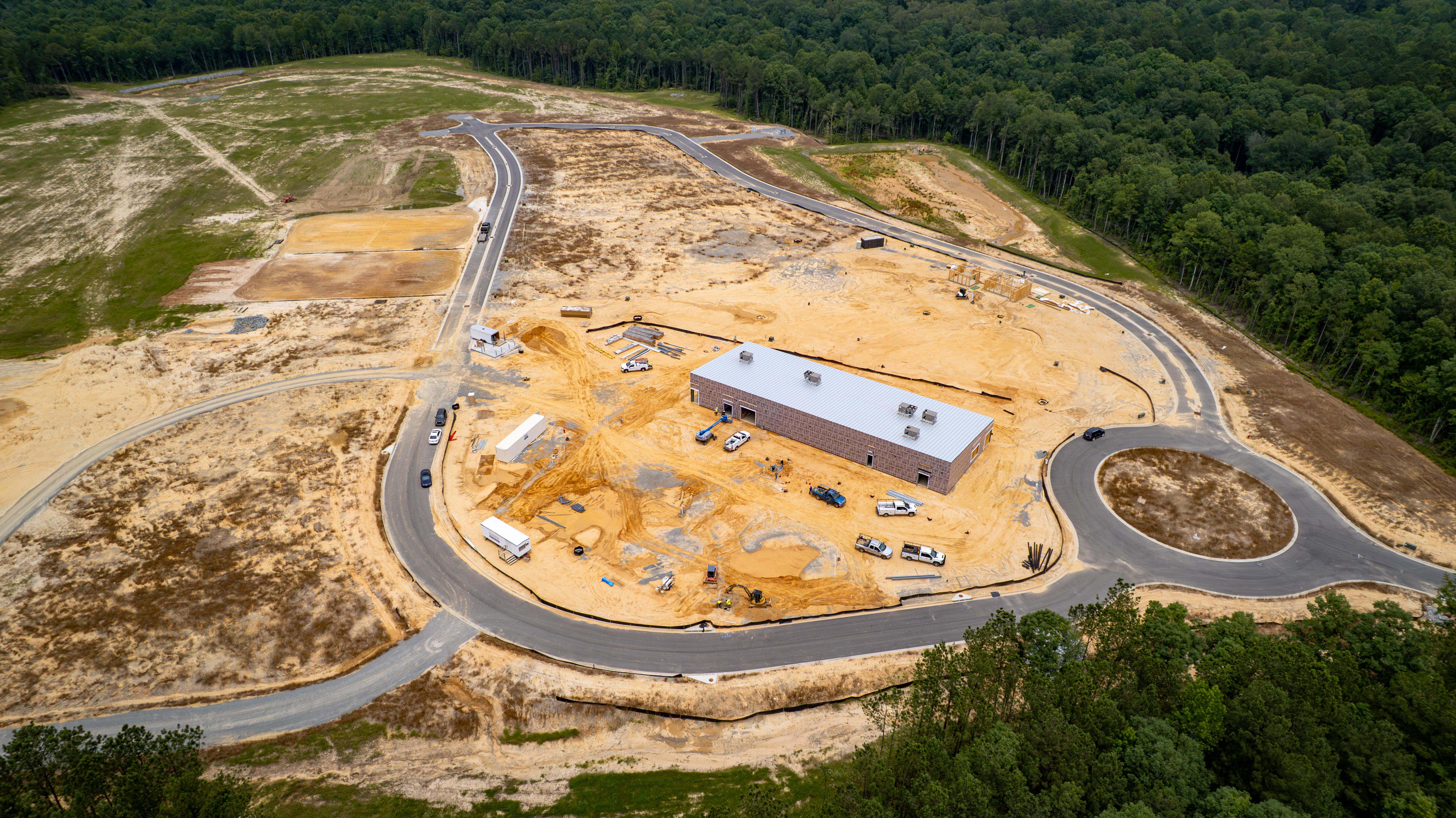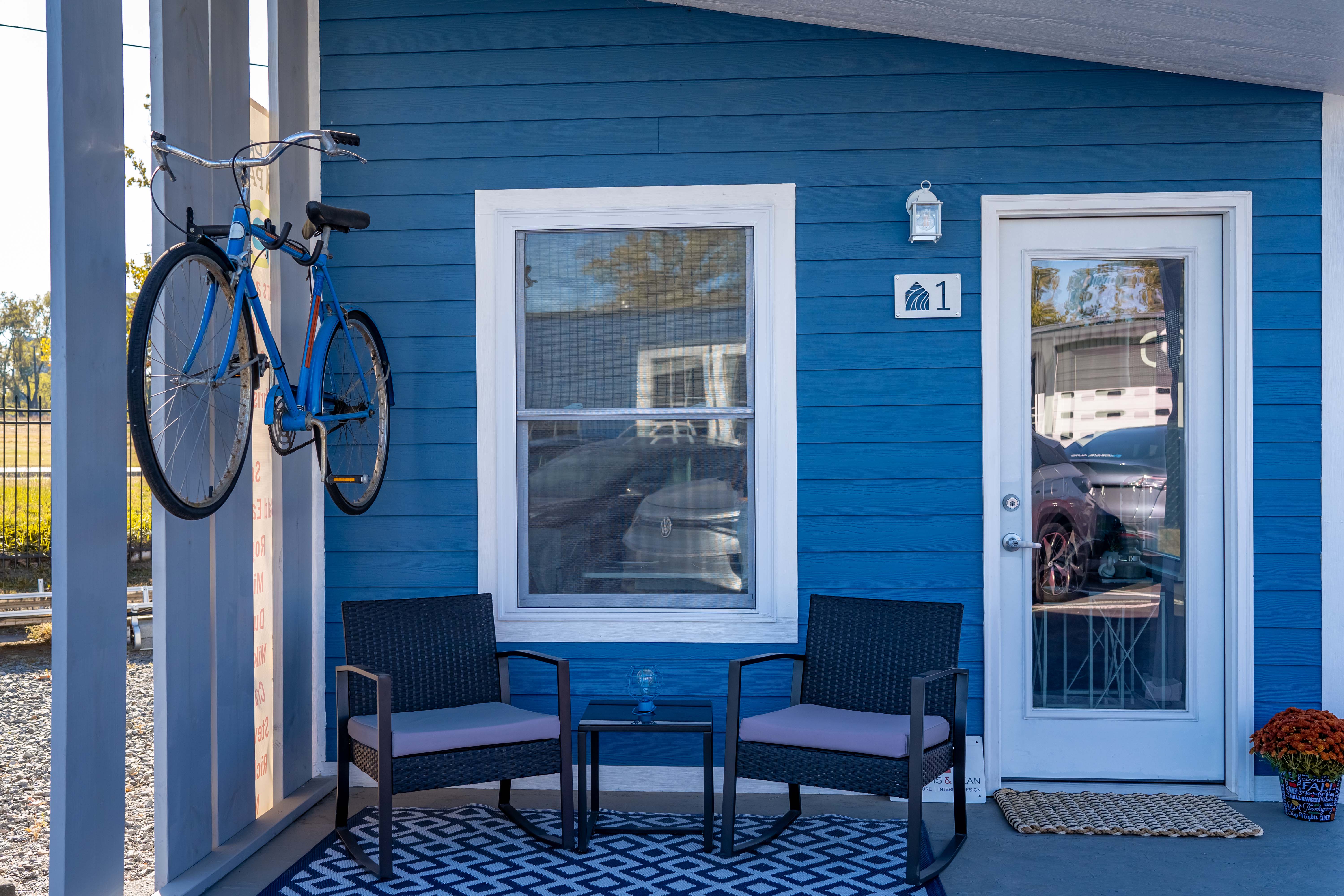A home of their own
July 28 - August 3, 2025
By Jay Edwards
Driving around Little Rock and throughout Pulaski County on any typical day you can’t help but see them, the too many men and women without a place to call home. They are standing, sometimes laying, as we, their more fortunate neighbors, zip by, perhaps not looking directly at them so we won’t be reminded too much that fate can be cruel and that life’s bad breaks may not be far away. We don’t want to imagine those shoes with holes we’re passing being on the other foot.
Thankfully there are also angels who live among us, and in Little Rock a team of them has said, enough. Because of them and their fearless stand against this condition, there is a large development in progress in southwest Little Rock with a goal of ending homelessness for hundreds of Arkansans.
Named Providence Park by its founders, the new community will sit on 50 acres, and when complete will include 400 tiny homes, along with medical support services, as well as income opportunities for citizens who will no longer be among the chronically homeless.
These are the first words you see when you open the website for Providence Park – “Welcoming home the chronically homeless.” They list criteria for the term as someone who lives in a place not meant for human habitation or has lived in an emergency shelter for at least one year (or four episodes within the past three years) and having at least one disability.
The second criteria is someone residing in an institutional care facility, including a jail or substance abuse or mental health treatment facility, hospital, or other similar facility, for fewer than 90 days if all of the criteria are met before entering that facility. They also say, couch surfing doesn’t count towards your homeless history.
Providence Park came to fruition through the vision and effort of Errin Stanger, who, back in 2019 was director of the Arkansas Regional Innovation Hub in Argenta. One morning, as she tells it, a woman was leaning against the front door at her office. They spoke and Errin learned the woman’s name was Joan and that she’d been homeless since Hurricane Katrina.
“She had been living out in the elements for some time,” Errin said, “and I was thinking, I don’t have anything that I need to help take care of her. I had water and snacks and coffee but not a real meal or a fresh change of clothes. But I realized that River City Ministries is down the street and Brother Paul and Potluck Food Rescue was literally across the street so I knew I could find some resources to take care of her right then.”
Miss Joan, as everyone began calling her, came around daily after that first encounter with Errin and everyone kind of lent a hand in doing things for her, but Errin soon realized it wasn’t sustainable.
“I thought we could do better for her and soon figured out that it would only come through some form of permanent housing.”
This led Errin to places like the Salvation Army and Our House. “These places were doing an awesome job with the resources they have, but it wasn’t what I was looking for. So then I did the statewide study, which was great because I met more people, great people, but I still didn’t find what I was looking for.”
“You have those interactions with people who stay with you. She really taught me what it looks like to be chronically homeless here in central Arkansas.”
What Errin was looking for besides a permanent home was something with wraparound services that included healthcare, both physical and mental, as well as activities. She was looking for community.
“It led me on a three year nationwide and international study. And I learned a lot as I started studying, like how other nations think about homelessness and what it what it means to them versus here in the United States.”
Then she came across a man in Austin, Texas named Alan Graham.
“I read his book and thought I had to go down and experience what he was doing.”
Graham created a nonprofit in 1998 called Mobile Loaves and Fishes, which led him to start Community First! Village in Austin for the chronically homeless. It sits on 50 acres and has permanent housing and wraparound support services.
“So Allen and a group of buddies said, ‘Okay, we want to do something about this homeless problem in Austin. He started with this food truck ministry, the Mobile Loaves and Fishes. It still exists today. There are like seven churches now that run these trucks, and there’s one that comes out to the village. They go out in these designated routes to where the homes are, and they have these items on the truck like oranges and the apples and hygiene items and clothes. And when a person comes up, there is no barrier between them and the volunteer. You get this human to human, heart to heart relationship that starts forming because there’s nothing in between you. And what happened with Alan and his friends is they started to get to know these individuals really well. Alan said, ‘I fell in love with prostitutes and drug addicts. I love them.’”
Inspired by Alan and his team and what she’d seen take place and work in Austin, Errin headed home to Little Rock. She was excited about what she’d seen and asked herself, how am I going to do this?
She went to those places where she felt people would share her enthusiasm, like the Compassion Center and Our House. Then she followed that up with Mayor Scott and Mayor Hartwick and their teams, where she received warm receptions.
“They were like, ‘Go forth and do good. We are excited.’”
She also remembered something Alan had told her, which was, “you are not going to want to do this on city property because we tried it in the Austin city limits but the zoning regs were terrible for us. We fought it for eight years. People wanted it, they just didn’t want it next to them.” So they moved Community First out onto 50 acres in Travis County.
“That led me to call Pulaski County Judge Barry Hyde, who I knew well,” Errin said. She met with Judge Hyde and showed him all her data and the video of Community First and told him he needed to go to Austin and see it for himself, which he did the next week.
“Judge Hyde is a pilot,” Errin said, “and he flew himself down and was able to meet with Alan and his team, interact with the neighbors, and see all the goodness there. When he came back I was busy working at The Innovation Hub, and my team came to get me, saying, ‘Judge Hyde is here, and he’s in your office.’ I was pretty sure I didn’t have a meeting scheduled with him that day, but I ran to my office and he said, ‘I’ve just gotten back from Community First.’ He had landed his plane and drove straight to me. He said, ‘I’m in. We gotta figure this out.’”
Three weeks later Hyde called Errin asking her to meet at his office, where he showed her a map. “He told me the county had bought 150 acres in between Chico Road and Geyer Springs, on Green Road. He said, ‘We have bought this to replicate Community First. And not only did we purchase this land, but we, as the county, are going to set aside American Rescue Plan dollars to put in the infrastructure.’”
“I just about fell out of the chair,” Errin said. “I was like, what is happening? What just happened to my life? I get emotional remembering the day like it was yesterday. And I thought, oh my goodness, I’m so excited. We’re actually doing this.”
“The county puts out a Request for Proposal because it’s the county. I’m the only nonprofit, of course, that filled out all the paperwork, managing and operating everything. So of course I was chosen, and we’ve just been hand in hand ever since. What’s been really fun is inviting people into the joy of the project, and we have a ton of partners that have come alongside us to help, which I love.”
The groundbreaking was in 2024. Errin resigned from Innovation Hub to step into the project full time and since then has been working with the architects and engineers to create the master plan and start construction.
Under construction is a 12,000 square foot Community Center which has staff offices, a catering kitchen, a large meeting space in the center for meals, meetings and gatherings. There is also a convenience store for quick grab and go items for the neighbors to pick up things they need. There’s also a welcome center and a gift shop.
Next up for construction will be a 3400 square foot medical clinic, which will have medical care, mental health care and dental care.
“Volunteer medical people come in,” Errin said. “So this is super special because all the hospitals are involved. When I sat down and started doing the research around the healthcare aspect of caring for the homeless, I talked to Dr Patterson at UAMS and Dr. Jones at St Vincent’s and Troy Wells at Baptist and their teams. I learned how much the ER is utilized by our homeless population. It is their PCP. The question was, how much money are you spending on caring for your homeless? Well, in Austin, the clinic on site, there at Community First, has saved their local emergency room, $8 million. So we are breaking ground on that next month. We just got that funded.”
All of the neighbor homes come fully furnished with a week’s worth of food, ready for move in and have that safe environment. And everybody gets a bicycle because there is a bike donor. “I love that,” Errin says through a big smile.
Webster’s definition of providence is - divine guidance or care.
Sounds about right.
To learn how you can become involved at Providence Park, visit their website – providenceparkhome.com
Photo Captions:
1. The development of the future home of Providence Park is well underway in southwest Little Rock.
2. The front porch of a model tiny home for Providence Park, of which 400 are planned for neighbors in the community.
3.The Providence Park tiny homes will have a living area, bedroom and bathroom.
Photo Credit:
(Photos submitted by Errin Stanger)




